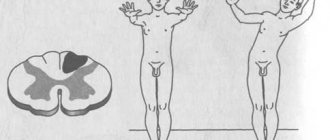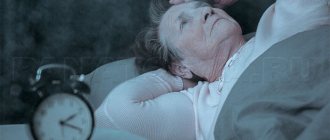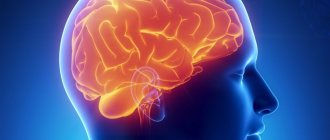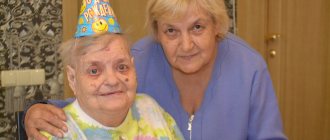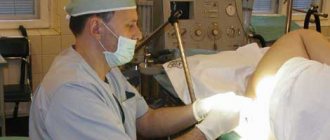1.General information
Neurodegeneration is a pathological process, with the development of which nervous tissue loses its complex organization, degenerates, gradually atrophies (decreases in volume and dies), becoming, in general, functionally untenable. Considering that the nervous system controls and regulates literally everything in the body, neurodegenerative diseases, even the slowest and most indolent ones, always constitute a serious problem, which is aggravated by the fact that at the moment all efforts to develop reparative (restorative) and etiopathogenetic ( eliminating the root cause of the disease) types of therapy have not brought tangible results.
For the most part, neurodegenerative diseases are caused by, or at least reliably associated with, hereditary, chromosomal factors. These diseases are traditionally considered rare, and in terms of tens and hundreds of thousands of people, many of them really seem to be sporadic, almost random anomalies. However, if we sum up the incidence of the fairly well-known diseases Alzheimer's, Pick's, Parkinson's, demyelinating multiple or amyotrophic lateral sclerosis, and DLB (dementia with Lewy bodies), the picture will look more alarming. Thus, with reference to data from post-mortem pathomorphological studies, it has been repeatedly emphasized in the literature that the same DLB (one of the frontotemporal variants of neurodegeneration) is diagnosed much less frequently than it actually occurs.
A large number of individual nosological units (i.e., officially established diagnoses of this group) are the subject of critical discussions, since degeneration of neural tissue is the main and common mechanism for the development of such diseases; for example, the extreme wing of supporters of generalization proposed “for convenience” to consider all diseases of this kind as only particular variants of Alzheimer’s or Parkinson’s diseases. This approach can hardly be considered justified: the clinical picture, rate of progression, prognosis, strategy of symptomatic treatment - all this is determined by a number of significant factors (primarily the predominant localization of the process) and differs sufficiently to speak of independent diseases.
The above fully applies to spinocerebellar ataxia. This is a hereditary neurodegenerative disease with its own distinct specificity, which can manifest at any age (usually in the range of 5-40 years) and is distinguished by a variety of forms: to date, over twenty relatively independent types have been identified and described (SCA, SCA 2, Friedreich's disease and many others). etc.).
A must read! Help with treatment and hospitalization!
Recommendations for the treatment of cerebellar motor dysfunction and ataxia
The American Academy of Neurology (AAN) guidelines provide a comprehensive systematic review on the treatment of cerebellar motor dysfunction and ataxia.
This review presents pharmacological therapies for patients with cerebellar motor dysfunction based on safety and efficacy considerations.
Medicines with proven effectiveness
| Moderate level of evidence | Administration of 4-amnipyridine 15 mg daily may reduce the frequency of ataxia attacks over a 3-month period in patients with episodic ataxia type 2 (1 class I study). |
| Riluzole 100 mg daily may be an effective short-term treatment for patients with ataxia of various etiologies; measured using the ICARS (Cooperative Ataxia Rating Scale) after 8 weeks (1 class I study). In patients with spinocerebellar ataxia (SCA) and Friedreich's ataxia (FA), riluzole 100 mg daily may reduce ataxia; measured using the Assessment and Rating of Ataxia (SARA) scale at 12 months (1 study, Cash I, analyzed data from a combined cohort of patients with SCA and FA, subgroup analysis not provided). Liver enzymes should also be monitored in patients receiving riluzole. | |
| Weak level of evidence | Valproic acid 1200 mg daily may increase SARA total score at 12 weeks in patients with spinocerebellar ataxia type 3 (SCA3) (1 class II study). The use of thyrotropin-releasing hormone in patients with “spinocerebellar degeneration” may improve some symptoms of ataxia over a period of 10–14 days (1 class II study). The clinical significance of these changes is unclear. |
Medicines with proven negative effects
| Moderate level of evidence | In ambulatory patients with SCA, 3 lithium does not appear to improve ataxia after 48 weeks; measured by the NESSCA (the Neurological Examination Score for Spinocerebellar Ataxia) and the SARA total score, and although minimal clinically important differences were not established on these scales, small changes cannot be excluded (1 study class I). |
| Weak level of evidence | Diferiprone 40 mg/kg per day may worsen attack symptoms in patients with FA when taken for 6 months (1 class II study). |
Medicines that have shown conflicting results
| Insufficient data | Insufficient data to support or refute change in ataxia with idebenone treatment of AF (1 class I study showed benefit at intermediate and high doses; 1 class I study provided insufficient evidence to support or refute the effect; 1 RCT with unpublished results of unknown AAN class (American Academy of Neurology) the drug did not show statistically significant changes when compared with placebo). |
| There is insufficient evidence to support or refute the benefit of buspirone for the treatment of cerebellar motor dysfunction (class III inconsistent studies). | |
| There is insufficient evidence to support or refute the benefit of l-tryptophan for the treatment of cerebellar motor dysfunction (inconsistent class III studies with limited available data). | |
| There is insufficient evidence to support or refute the benefit of choline for the treatment of ataxia (inconsistent class III studies with limited available data). |
Medicines with insufficient evidence
| Insufficient data | There is insufficient evidence to support or refute the effectiveness of varenicline (mean dose 1.67 mg/day) in the treatment of ataxia in patients with SCA 3 over 4 weeks, as measured by SARA total score (1 class II study with insufficient precision in measuring primary endpoint of the study). |
| There is insufficient evidence to support or refute the benefit of ondansetron for the treatment of patients with ataxia (1 class II study with insufficient power, 1 class III study with insufficient power, and 1 class III study of cerebellar tremor with only 2 patients with cerebellar degeneration evaluated) . | |
| There is insufficient evidence to support or refute the benefit of dolasetron mesylate for the treatment of patients with cerebellar syndrome secondary to multiple sclerosis (MS) (1 class III study). | |
| There is insufficient evidence to support or refute the benefit of trimethoprim-sulfamethoxazole for the treatment of patients with SCA 3 (1 class III study). | |
| There is insufficient evidence to support or refute the benefit of zinc for the treatment of patients with SCA type 2 (1 class II study with limited power). | |
| There is insufficient evidence to support or refute the benefit of l-acetylcarnitine in the treatment of patients with degenerative cerebellar ataxia (1 class III study). | |
| There is insufficient evidence to support or refute the benefit of physostigmine in the treatment of patients with cerebellar ataxia (2 class III studies at different time periods and with limited description of the results). | |
| There is insufficient evidence to support or refute the benefit of amantadine in the treatment of patients with cerebellar ataxia (1 class III study). | |
| There is insufficient evidence to support or refute the benefit of branched-chain amino acids in the treatment of patients with cerebellar ataxia (1 class III study). | |
| There is insufficient evidence to support or refute the benefit of betamethasone in patients with ataxia telangiectasia (1 class III study). |
Do surgery or other interventional therapies (eg, physical training) improve motor symptoms with acceptable safety and tolerability compared with no (or alternative) treatment in patients with cerebellar motor dysfunction?
| Weak level of evidence | The use of a pneumatic splint in conjunction with neuromuscular rehabilitation may have no additional benefit compared with the use of neuromuscular rehabilitation alone in patients with MS-associated ataxia (1 class II study). |
| Moderate level of evidence | Four weeks of inpatient rehabilitation with physical and occupational therapy in patients with isolated degenerative ataxia appears to reduce ataxia and improve functional ability at 4 weeks compared with baseline (1 class I study). |
| Insufficient data | There is insufficient evidence to support or refute the benefit of whole body stochastic vibration therapy in patients with SCA (1 class III study). |
Does transcranial magnetic stimulation (TCMS) or transcranial direct current stimulation (tDCS) improve motor symptoms with acceptable safety and tolerability compared with no (or alternative) treatment in patients with cerebellar motor deficits?
| Weak level of evidence | Cerebellar TCMS may improve cerebellar motor function after 21 days in patients with spinocerebellar degeneration and olivopontocerebellar atrophy (1 class II study). |
| Insufficient data | There is insufficient evidence to support or refute the use of a single session of anodal cerebellar transcranial direct current stimulation (tDCS) for the treatment of ataxia (1 class III study). |
This extensive systematic review was approved by the Children's Ataxia Project and the National Ataxia Foundation.
Link to original text https://www.aan.com/Guidelines/home/GetGuidelineContent/893
2. Reasons
Spinocerebellar ataxia is based on an inherited mutation of certain genes (the type of inheritance, as a rule, is such that if both parents are carriers, then the probability of the pathology “triggering” in the child is 1/4 or 25%). As a result, a number of complex electrochemical processes that control energy and protein balance are disrupted (the defective structure of the frataxin protein plays a significant role), the transmission of nerve impulses from the center to the periphery and back, etc. The unifying feature for the entire group of ataxias is that in neural degeneration structures of both the brain (primarily the cerebellum) and the spinal cord are involved, as well as the pathways between them, peripheral nerves and, in some cases, myocardial tissue. The term “ataxia” literally means “lack of order, coherence,” and, by definition, the main manifestation of spinocerebellar ataxia is progressive impairment of motor coordination and, in general, neuromuscular coherence.
Visit our Neurology page
Development of the disease
Every human movement is the work of different muscle groups, depending on the correct relationship of 3 elements. This:
1 - structures and connections of the cerebellum (the main organ of movement coordination);
2 - receptors that react to the current state of the joint capsule, tendons, muscles and their conductors;
3 - vestibular apparatus, which evaluates incoming impulses and body position.
If any failure occurs in these elements, disease occurs. The type of ataxia depends on what exactly was affected. Accordingly, there are types of ataxia:
sensitive ataxia - the susceptibility of deep muscle conductors is impaired;
vestibular ataxia - damage occurs in the system responsible for balance;
Cerebellar ataxia is a disruption of the functioning of this part of the brain;
frontal or cortical ataxia - dysfunction of the cortex of the frontal or temporo-occipital region.
Types of diseases transmitted by inheritance are separated into a separate group. These are: Friedreich's familial ataxia, Pierre-Marie's cerebellar ataxia, ataxia-telangiectasia (Louis-Bar syndrome). Spinocerebellar ataxia is a separate hereditary disease and today about twenty of its forms are known.
3. Symptoms, diagnosis
The probable symptoms of spinocerebellar neuronal degeneration are so polymorphic that it is impossible to describe at least the main of its twenty types in one article. There are disorders of visual-motor coordination and muscle tone (tremor, extrapyramidal “stiffness”); partial paralysis of the extraocular muscles and degenerative retinopathy in combination with optic nerve atrophy; general atrophy of muscle fibers; various neurological symptom complexes. If the neurodegenerative process affects the cerebral cortex, dementia gradually develops - a debilitating decline in cognitive functions (memory, attention, various types of recognition, etc.), logical thinking, and speech organization. In case of damage to the medulla oblongata, “bulbar” symptoms develop: degradation of swallowing, palatal, chewing, and respiratory reflexes.
Diseases in this group progress relatively slowly: the course can take up to 20 years or more, although much faster developments have also been described. Patients gradually lose the ability for self-care and, in general, for productive contact with the world; they increasingly depend on the care and support of others, falling into complete helplessness towards the terminal stage and dying, as a rule, from pneumonia, exhaustion, respiratory failure, etc.
Neurodegenerative diseases, including ataxia, are diagnosed clinically, during a neurological examination and a thorough analysis of complaints and anamnestic information. Additionally, tomographic imaging methods, neuropsychological examination, etc. may be prescribed, but the final diagnosis is established and differentiated, as a rule, only pathomorphologically.
About our clinic Chistye Prudy metro station Medintercom page!
Causes and signs of ataxia
The disease can manifest itself as a result of mechanical damage to the skull or brain, hydrocephalus, cerebral palsy, congenital anomalies of brain development or infectious diseases, circulatory disorders, the presence of tumors and abscesses, and genetic predisposition.
The causes of sensitive ataxia are usually various vascular pathologies, tumors, lesions of the posterior nerves and brain stems, peripheral nodes, and the parietal lobe of the brain. In patients, the correct sensations of the surface are disturbed; for example, hard asphalt may seem like a carpet. Therefore, it is important for them to control their vision over their movements; they constantly look at their feet. When walking, bend your knees strongly, stepping loudly.
Cerebellar ataxia (the most common) occurs when the cerebellum is damaged, which can be caused by multiple sclerosis, genetics, encephalitis, tumors, infections, toxic substances, inflammatory processes, hypothyroidism, deficiency of vitamins E and group B. The symptoms of this ataxia are expressed as follows: the patient staggers in the process of walking, he places his legs wide apart, makes sweeping movements, it is difficult for him to coordinate actions both by opening and closing his eyes, speaks slowly, writes in uneven letters, and has decreased muscle tone.
The causes of vestibular ataxia usually lie in damage to this organ of balance, which occurs as a result of the appearance of brain tumors, Meniere's syndrome, encephalitis and other diseases. Typical clinical picture: dizziness, nausea, aggravated by head movements, vomiting.
Frontal ataxia in most cases is caused by abscesses, poor circulation in the brain, and the presence of malignant neoplasms. Such patients are characterized by unsteady walking, may fall over when turning, their sense of smell is impaired, changes in the psyche are observed, and the grasping reflex does not work.
4.Treatment
There is currently no treatment that reverses or even stops neurodegeneration. All types of therapy practiced today are purely palliative in nature and are aimed at mitigating the most maladaptive symptoms that reduce the quality of life and dominate in a specific clinical picture. As a rule, medications are prescribed to improve neurotrophism (nutrition of nerve tissue), vitamin complexes, massage, and physical therapy to correct and/or compensate for movement disorders.
How to Diagnose Ataxia
To correctly diagnose a patient, different methods are used. Among them: MRI and electroencephalography of the brain, electromyography, magnetic resonance angiography. To establish a diagnosis of hereditary types of ataxia, DNA diagnostics is used, which makes it possible to determine the possibility of inheritance of pathogens of this disease in the family. Laboratory diagnostics are also used to check whether there are disorders of amino acid metabolism, which is one of the indicators. Examination by medical specialists: neurologist, psychiatrist, ophthalmologist is also of great importance.
Danger of ataxia and risk groups
Since this disease is associated with impaired coordination, and also contributes to respiratory and heart failure, weakened immunity, its development can lead to disability, and in advanced cases, death. But following medical recommendations often guarantees not only a significant improvement in physical condition, but also recovery. Based on statistics, the likelihood of contracting this disease is most often in people with a history of genetic predisposition, encephalitis, epilepsy, circulatory and brain disorders.
